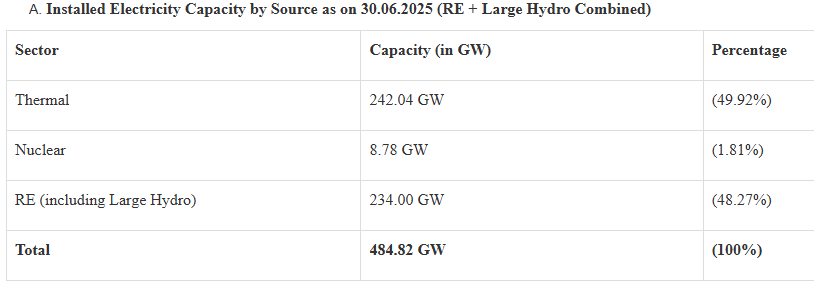7667766266
enquiry@shankarias.in
Prelims: Current events of national and international importance.
Why in News?
India’s renewable energy capacity utilization stands at 30%, despite its contributing to a 50% share in India’s total energy capacity.

|
Year |
Share of Renewable energy in India’s installed electricity capacity |
|
2014-15 |
30% |
|
2024-25 |
50% |
The quantum of clean energy (non-fossil) produced annually has risen quite significantly from 190 billion units in 2014-15 to 460 billion units in 2024-25.
Capacity utilization factor (CUF) is a measure of how much available energy was usable.
Reference
The Hindu| Capacity Utilization of Renewable Energy